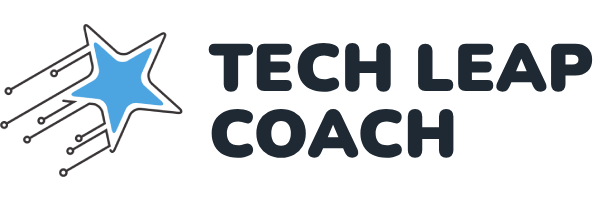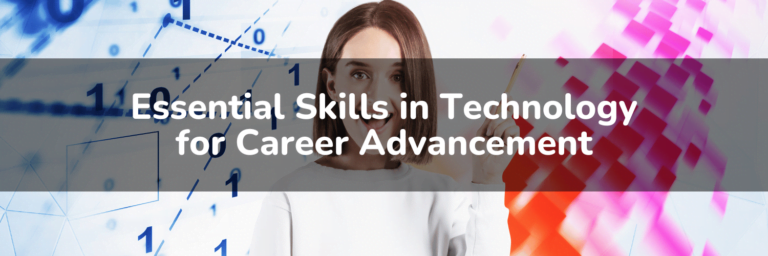How to Start a SaaS Company: The Essential Blueprint
The SaaS startup journey requires clarity and actionable steps.
If you’re Googling ‘how to start a SaaS company,’ you’re likely seeking a no-nonsense guide to bring your software idea to life.
This guide delivers just that—concrete advice on identifying a viable market opportunity, creating a compelling product, assembling your core team (and how to start out as a solo founder too), and setting a solid financial foundation.
TL;DR
Identifying a problem that affects real people or businesses and understanding your target market is crucial for developing a SaaS product that fills a market gap and addresses customer pain points.
Your SaaS product needs to stand out with unique features and a strong value proposition, backed by a comprehensive business plan and a well-crafted marketing and sales strategy.
Assemble a skilled team, develop and validate an MVP, monitor essential metrics, and employ effective marketing to guide the SaaS company towards growth and success.
Identifying the Right Problem to Solve

The initial stride towards launching a thriving SaaS company involves pinpointing the appropriate problem to address.
It’s not just about spotting a gap in the market; it’s about understanding a problem so intimately that your solution becomes indispensable. This could be a problem you’ve personally struggled with or one that you’ve observed others grappling with. Either way, answering this need with a solution that truly alleviates the problem is the key to market relevance.
Conceptualizing potential solutions and honing your saas idea is a pivotal move in this undertaking.
Look at existing solutions in the saas industry and identify areas that could be improved. This could spark an idea for a SaaS business.
Your SaaS product should be rooted in a real-life need in the market or solving a problem faced by real people or businesses. Therefore, understanding your target market and what needs your SaaS company will fill for them is a crucial step before setting specific goals.
Market Gap Analysis
Conducting a comprehensive market gap analysis is a significant stage in determining the correct problem to address.
To effectively identify market opportunities, one should determine what customers are seeking that they cannot find in the existing offerings from competitors. This will help you understand the gaps in the market and the needs of potential customers that aren’t currently met.
Preventing misconceptions about the presence of untapped market demand or overlooking the effectiveness of current solutions is key.
Hence, an exhaustive market research is of utmost importance for a SaaS company.
With a clear understanding of the market gaps and customer needs, you’ll be able to refine your SaaS product idea and create a comprehensive business plan that aligns with your marketing strategy and target audience.
Customer Pain Points
Understanding the pain points of potential customers is a critical component of launching a successful SaaS business.
By clearly understanding the needs of current and potential users, you can ensure that your SaaS product addresses the most pressing issues.
Recognizing which of these needs are worthwhile to address is vital for the product’s triumph. This understanding will guide the development of your SaaS product and ensure that it provides a solution that not only addresses customer pain points but also provides value to them.
This is a key aspect of building a customer-centric SaaS business that truly meets the needs of its customers.
Developing Your Unique SaaS Solution

Creating a SaaS product that stands out from the crowd is the next big step.
In the ever-dense SaaS market, it’s imperative to cultivate a distinctive, superior product. Whether it’s incorporating a unique design, embedding artificial intelligence (AI) features, or writing clean, high-quality code, every aspect of your product should be designed to meet the specialized needs of customers and ensure product longevity and success.
Effective branding and creating a differentiated presence in the marketplace are vital for a SaaS company’s ability to stand out and be memorable.
The key is to create a product that not only solves a real problem but also does it in a way that is different and better than any other solution in the market.
Defining Your Value Proposition
Your SaaS product requires a compelling value proposition.
It should clearly outline what sets it apart from existing solutions and why customers should choose it over others. A subscription based pricing model, for instance, offers benefits like minimal upfront costs for new customers and the potential for increased lifetime value per customer.
Moreover, SaaS web applications are more cost-effective due to lower subscription fees and reduced training and support costs.
By defining a clear unique selling point, you can effectively position your SaaS product in the market, making it easier for potential customers to see why they need your saas products.
Building a Strong Product Roadmap
After delineating your value proposition, the succeeding move is to establish a robust product roadmap. This comprehensive plan should cover:
Software specifications
Design
Cloud infrastructure
Security analysis
Post-deployment documentation
Implementing a multi-tenancy architecture is an essential technical consideration that facilitates scaling.
It allows for resource allocation based on each customer’s needs while keeping their data isolated.
The product roadmap should also prioritize automation, simplicity, and maintaining high quality in the development process to maximize development efforts.
Assembling the Right Team

Starting solo is perfectly fine.
But as you grow, you’ll have more and more work with maintaining your project, not to say about growing it further. So assembling a proficient and diverse team is a necessary next step.
While it’s possible to start a SaaS company without technical expertise, building and maintaining the software can become challenging. Venture capitalists look for commitment, drive, vision, and hard work in the team when considering investment in new companies, so assembling the right team is not just crucial for the operational success of your SaaS company, but also for securing necessary funding.
Effective coordination and collaboration among marketing, sales development, sales, and account management teams are crucial for success in the competitive SaaS sales environment.
Regular communication channels between teams ensure that everyone stays informed about product updates, audience insights, and customer feedback.
Sharing a unified vision and goals across the team establishes a powerful force that drives the entire company forward.
Technical Expertise
Technical expertise is a vital element of a triumphant SaaS team.
To optimize product performance, develop innovative features, and troubleshoot technical issues, SaaS company owners often seek the help of technically skilled CTOs. A technical CTO can provide a comprehensive checklist of aspects needing attention and guide the development process effectively.
Options for software development outsourcing include hiring a custom software development company, partnering with software companies, or relying on a team of seasoned professionals.
Building a SaaS product can be done by hiring in-house developers, freelancers, or a development agency, depending on the company’s needs.
Starting your own SaaS company without technical expertise is possible depending on the level of tech-savviness and the strategic choices such as partnering or outsourcing.
Marketing and Sales Talent
Drawing in adept marketing and sales professionals holds equal significance.
They are the ones who will effectively promote your SaaS product and drive revenue. Determining whether to have a dedicated sales team or utilize a self-service sales model is a critical part of defining the sales strategy for a SaaS business.
Providing continuous training and development is crucial for sales and sales development teams to stay updated on the latest product updates and industry trends.
With a team of skilled marketing and sales professionals, your SaaS company will be well-positioned to capture the attention of potential customers and convert them into loyal users.
Crafting a Comprehensive Business Plan

A comprehensive business plan is vital to secure financing and steer growth. It offers clarity and articulates the venture’s vision and strategy to potential investors and customers. Here are some key components of a business plan:
Articulate the company’s financial goals.
Forecast operating expenses through itemized listings.
Highlight primary revenue streams, such as a subscription-based business model.
Operational strategies within a business plan should include:
Sales channels
Marketing activities
The core team’s roles
Roles to hire
A schedule of tasks and milestones
Plan review meetings for continual strategy adjustment and tracking.
Multiple solutions for funding can be explored including bootstrapping and pitching to angel investors or venture capitalists, with the added advantage of expedited learning and initial market access when securing the right investors from the beginning.
Financial Projections
Financial forecasts form an integral part of a SaaS business plan. They include:
Subscription sales forecast
Churn rate
Lifetime value (LTV)
Customer acquisition cost (CAC)
Cash flow forecast
These projections are crucial for tracking progress and managing finances, as they help in determining the most suitable pricing model for the long-term viability of a SaaS startup.
Given that customer payments are spread out over time, a subscription-based SaaS business often requires more initial funding than anticipated to sustain growth.
Therefore, a SaaS company’s financial plan should reflect various scenarios, including both worst-case and best-case situations, to accurately determine the required cash reserves.
Marketing and Sales Strategy
An all-inclusive marketing and sales strategy forms a pivotal part of a SaaS business plan.
It lays out multiple tactics for attracting and converting new customers. Understanding the target market is crucial for tailoring the business plan based on the target market’s preferred channels and behaviors for discovering new products.
Articulating a clear value proposition before launching marketing campaigns is critical to effectively reach and resonate with the target audience. A comprehensive product launch plan should include:
A timeline
A budget
A strategy for generating buzz
KPIs to measure the campaign’s effectiveness.
Developing and Validating Your MVP

Developing a minimum viable product (MVP) is a significant move in launching a SaaS company.
An MVP is the simplest version of a product used for testing to validate assumptions and gain insight into customer needs. Creating an MVP is crucial for saving time and money before full-scale building, testing hypotheses with real users, and validating the startup idea.
To develop an MVP, prioritize a software development approach that supports modularity and scalability, and consider starting with inexpensive mockups before building a testable prototype.
Once the MVP is fully-functioning and free of major issues, release a beta version to further test market assumptions and gain user feedback.
MVP Development
Crafting a SaaS MVP entails:
Ranking and choosing fundamental features crucial for addressing customer issues and aligning with the product vision.
Utilizing an iterative development process.
Focusing on creating and refining core functionalities based on user input for efficient resource allocation.
A SaaS MVP contributes to a faster time-to-market, enabling earlier entry into the market by streamlining the product development cycle.
Cloud infrastructures such as Amazon Web Services or Microsoft Azure, along with BaaS platforms and low-code development environments, provide scalable resources that aid in accelerating MVP development.
During the development of the MVP, it’s crucial to integrate security measures like multi-factor authentication and encryption to test for and mitigate potential risks.
Market Validation
Market validation is a significant stage in the process of launching a SaaS company.
Talking to potential customers and gathering feedback in real life can help you understand the market’s response to your product. This feedback is invaluable in refining and improving the SaaS product to better meet market needs and customer expectations.
Market validation through customer feedback and early adoption is pivotal in refining and improving the SaaS product to better meet market needs and customer expectations.
By doing this, you can ensure that your product is not only functional but also valuable to your target customers.
Implementing Effective Marketing Strategies
After validating your MVP, the subsequent move is to execute potent marketing strategies.
Marketing in SaaS is critical as it not only attracts potential customers but also serves as a driving force for the company’s online presence. Creating accurate customer personas is essential for identifying and reaching the target audience effectively.
A successful SaaS marketing strategy employs a combination of various channels, both organic and paid. Some key channels to consider are:
Social media marketing
Content marketing (blogs, infographics, videos)
Facebook and Google ads
Video marketing strategies (gating demo videos)
Account-based marketing for personalized campaigns
Sending real-life promotional materials
These strategies can help engage with your audience and drive success for your SaaS company.
Content Marketing
Content marketing acts a pivotal role in SaaS, propelling lead generation, amplifying brand awareness, and situating the company as a thought leader.
To stand out in the competitive SaaS market, it is essential to consistently produce high-quality, persona-driven content that resonates with the target audience.
Offering valuable content such as infographics, eBooks, and white papers in return for contact information can effectively convert visitors into marketing qualified leads, supporting the lead generation process. Evaluating and optimizing the entire website for SEO is crucial for SaaS businesses to organically drive potential customers into their marketing funnels.
Collaborative efforts between marketing and sales teams lead to the creation of more effective and relevant content by leveraging sales insights into customer pain points and utilizing customer relationship management strategies.
Paid Advertising and Organic Channels
Even though content marketing proves to be an efficient organic marketing strategy, it’s equally crucial to employ paid advertising channels.
Paid media channels should be used selectively, with research ensuring the right keywords and placements for a targeted audience.
It’s also important to track and analyze marketing efforts to refine the strategy and optimize campaigns for your SaaS product. By utilizing both paid media and organic channels, you can reach a wider audience and drive customer acquisition more effectively.
Monitoring Key Metrics for Growth and Success
Keeping track of key metrics forms an integral part of operating a successful SaaS business.
Aligning key performance indicators (KPIs) with the strategic product roadmap is essential for setting development priorities and measuring the success of the SaaS product. Churn reduction is a critical growth metric for SaaS companies, indicating the need to simplify the customer journey and increase client engagement to sustain business growth.
By tracking these key metrics, you can ensure your SaaS company is on the right path to success.
These insights will allow you to identify areas of improvement, optimize operations, and make data-driven decisions to increase profitability.
Essential SaaS Metrics
Overseeing vital metrics like churn rate, lifetime value (LTV), and customer acquisition cost (CAC) is fundamental to evaluate your SaaS company’s performance.
These metrics provide valuable insights into your company’s financial health and long-term viability.
Given that customer payments are spread out over time, a subscription-based SaaS business often requires more initial funding than anticipated to sustain growth.
Therefore, it’s crucial to keep a close eye on these metrics and adjust your strategies accordingly to ensure the long-term success of your SaaS company.
Data-Driven Decision Making
Taking decisions based on data forms a critical aspect of operating a successful SaaS company.
By tracking key metrics, you can make informed strategic decisions and reduce guesswork. This approach aids SaaS companies in determining effective operational strategies and timing for growth.
Monitoring crucial metrics such as revenue churn is instrumental in enhancing the profitability of a SaaS business. By adopting a data-driven approach, you can guide better strategic choices, improve operations, and increase profitability for your SaaS company.
Summary
Launching a successful SaaS company might seem like a daunting task, but with a clear roadmap and the right approach, it’s entirely achievable.
From identifying the right problem to solve and developing a unique SaaS solution to assembling the right team and crafting a comprehensive business plan, every step is crucial. Remember, monitoring key metrics and making data-driven decisions are vital for growth and success.
So, are you ready to embark on this exciting journey and make your SaaS dream a reality?







